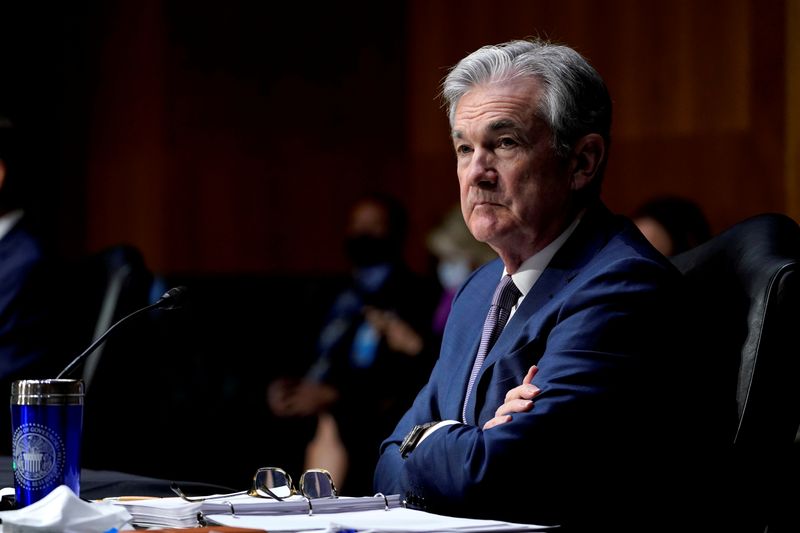(Reuters) -The U.S. economy is at an “inflection point” with expectations that growth and hiring will pick up speed in the months ahead, but some risks remain, particularly any resurgence in the coronavirus pandemic, Federal Reserve Chair Jerome Powell said.
In a brief preview of a longer interview with CBS’ news magazine program “60 Minutes” set to air in full on Sunday night, Powell echoed both his recent optimism about the economy and a now-familiar warning that COVID-19 remains the main risk.
“We feel like we’re at a place where the economy is about to start growing much more quickly and job creation coming in much more quickly, so the principal risk to our economy right now really is that the disease would spread again,” Powell said. “It’s going to be smart if people can continue to socially distance and wear masks.”
Indeed, recent data on the economy has been positive by and large, with a better-than-expected 916,000 jobs created in March and some Fed officials suggesting a run of a million new jobs a month is possible later this year.
While pockets of the United States are seeing an upswing in COVID-19 cases – in Michigan in particular – infection rates in large parts of the country are at multi-month lows, and the vaccine rollout continues apace with a one-day record of 4.6 million doses given on Saturday, according to a Reuters tracker.
That has allowed wide swaths of the economy to more fully reopen. Activity in the hardest-hit leisure and entertainment sectors has picked up significantly in recent weeks as consumers regain the confidence to resume dining out and hopping on airplanes.
Still, even with March’s big increase in employment, the labor market remains 8.4 million jobs short of where it was in February 2020, just before the pandemic triggered an historic downturn, and even further short of where the level of employment would be now had the pandemic never occurred.
The bounce back has also been uneven. The unemployment rate is 6% nationally, but is 9.6% for Blacks and 7.9% for Hispanics versus 5.4% for whites, and 8.2% for those without a high school diploma versus 3.7% for those with college degrees.
That is why Powell and fellow Fed policymakers have repeatedly promised not to let up any time soon on the massive support they are providing to the economy through near-zero interest rates and $120 billion a month of bond purchases.
Last year they committed to a new operating framework that places restoring the U.S. labor market to a “maximum” level of employment as the paramount of their two congressionally mandated objectives. The other is price stability, or keeping inflation broadly in line with their target of 2% on a year-over-year basis.
The new framework builds in allowances for inflation to run above that level for a time without them intervening to rein it in, measures that typically involve imposing more restrictive conditions that would likely slow activity and hiring.
But their commitment to that pledge is going to be tested in the coming months with data likely to show a pickup in inflation, especially when measured against levels a year ago when the early days of the pandemic crushed consumer demand and prices along with it.
Powell said as recently as Thursday, however, that the central bank is nowhere near reducing its support for the economy and that the coming upswing in inflation readings is likely to be transitory. And, as in his “60 Minutes” interview, he said the virus continues to govern the outlook.
“If you listen very closely to what he said, ‘we’re at a place where we will begin to see, we will begin to see.’ And then he also cautions against a surge in the virus,” U.S. House of Representatives Speaker Nancy Pelosi said on CBS’ “Face the Nation” immediately after the Powell interview preview was shown. “If we’re going to grow the economy with confidence, we’ve got to crush the virus. They are definitely related.”


